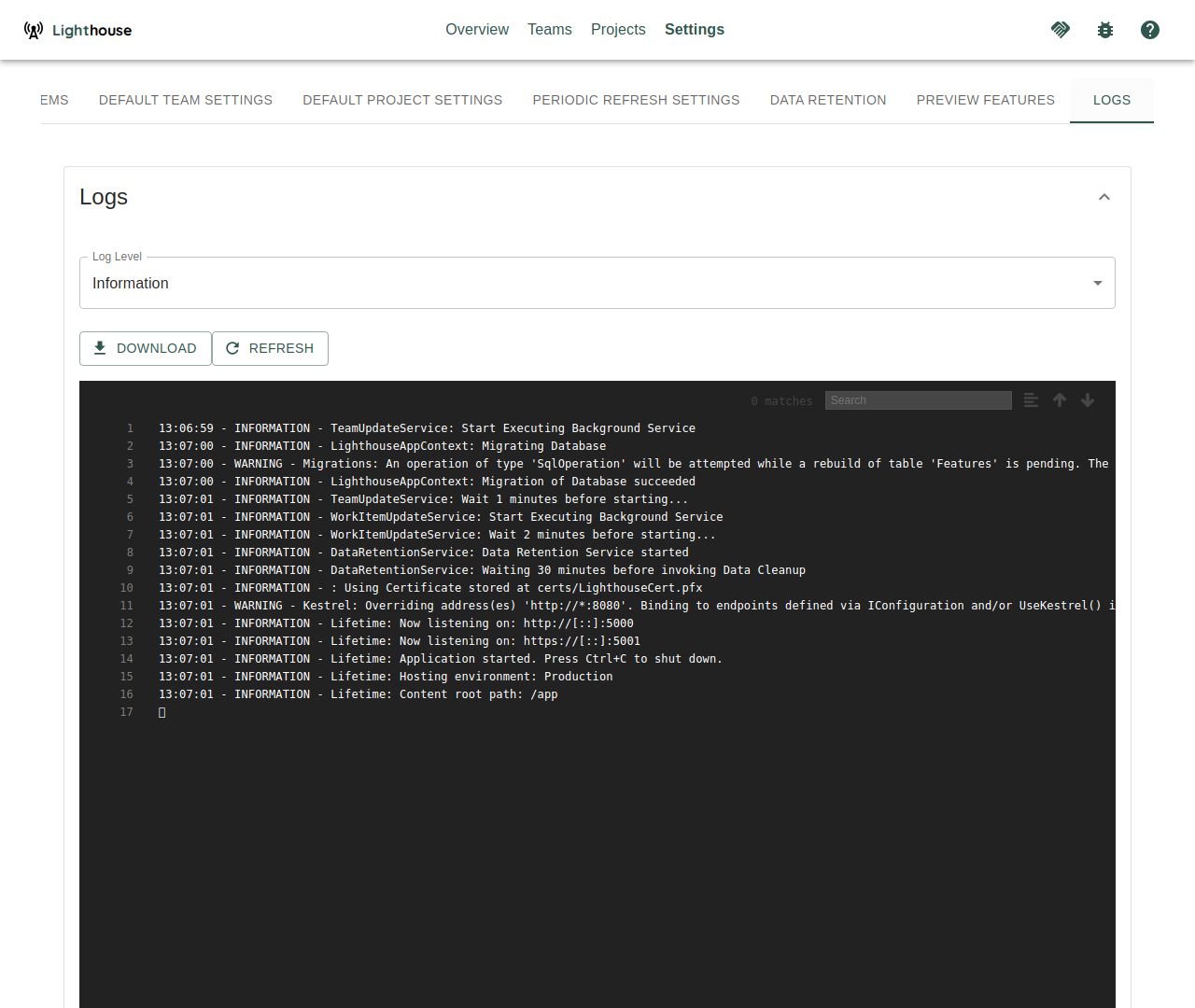Logs
We really hope you don’t need this…but then again, Software is complex and it’s very possible that once you run into a problem and need some more details on what was going on (or we ask for this info to better find the problem).
For this case, you can check the Logs.

Log Level
Log levels describe the level of detail that should end up in the log. The more “sensitive”, the more messages will be added. Following Log Levels can be selected:
| Level | Description |
|---|---|
| Verbose | Most detailed logging level, includes all messages |
| Debug | Includes detailed information useful for debugging |
| Information | General information about application flow |
| Warning | Potentially harmful situations that aren’t errors |
| Error | Error events that might still allow the application to continue |
| Fatal | Very severe errors that will terminate the application |
For normal operations, we recommend to keep the log level at Warning or Information. Debug and Verbose should only be used selectively to analyze errors, as otherwise the log will grow a lot, and most likely you’ll have too much information in there for it to be truly useful.
View Logs
You can check the Live Logs in the built-in Log View. This also supports a Search with syntax highlighting, for example if you want to find a specific feature by name or ID.
The latest logs are the bottom of the Log Viewer. So for newer things you have to scroll down
The logs won’t be updated automatically. If you want to get the latest ones, hit the Refresh button and the viewer will reload the latest ones.
Download
For a quick glance, the built-in Log Viewer is nice. However, for some extended analysis or to provide Logs to other people (for example as part of a bug report), you can download the full Log file. Simply hit the Download button, and the file will be downloaded to your computer.